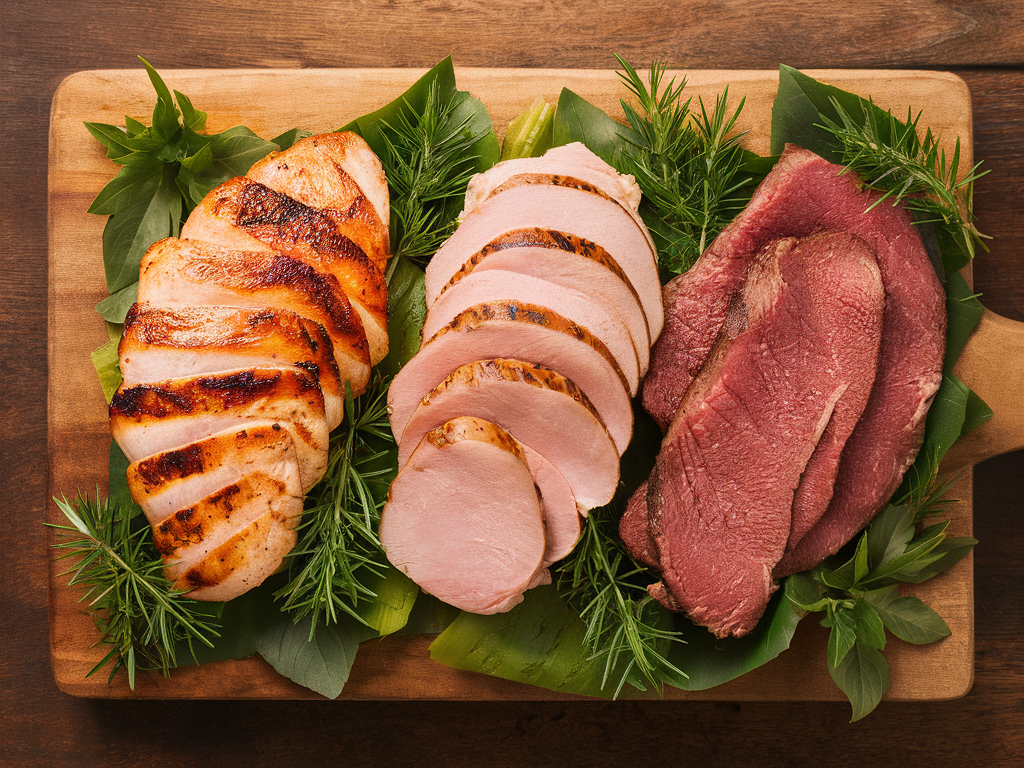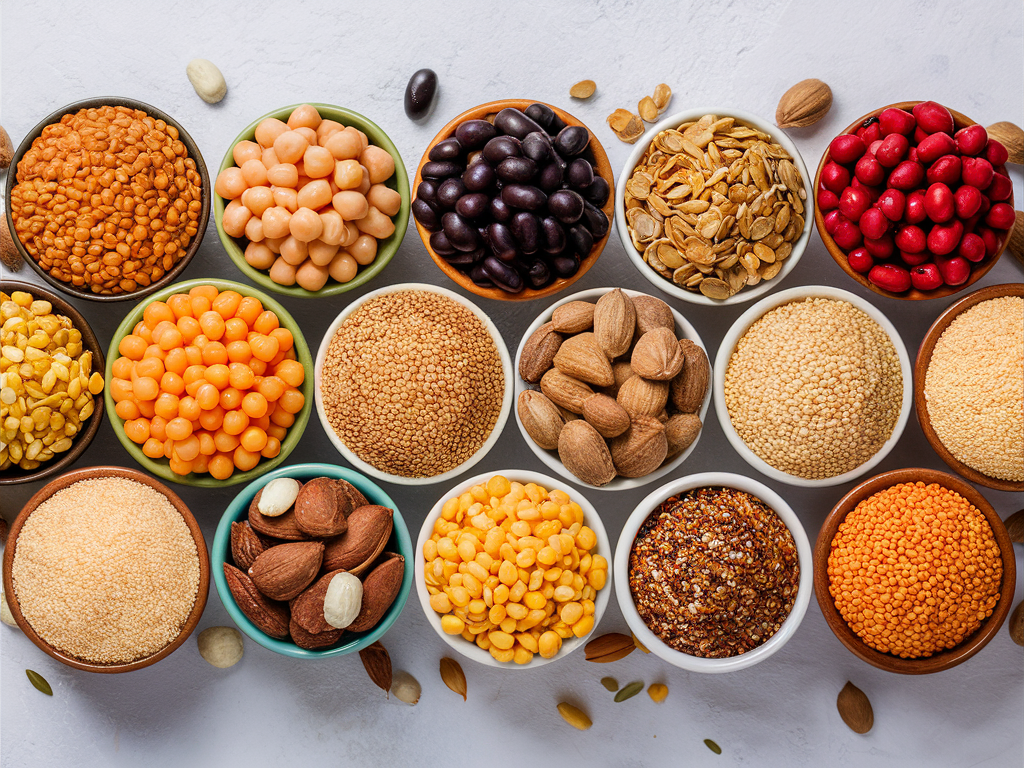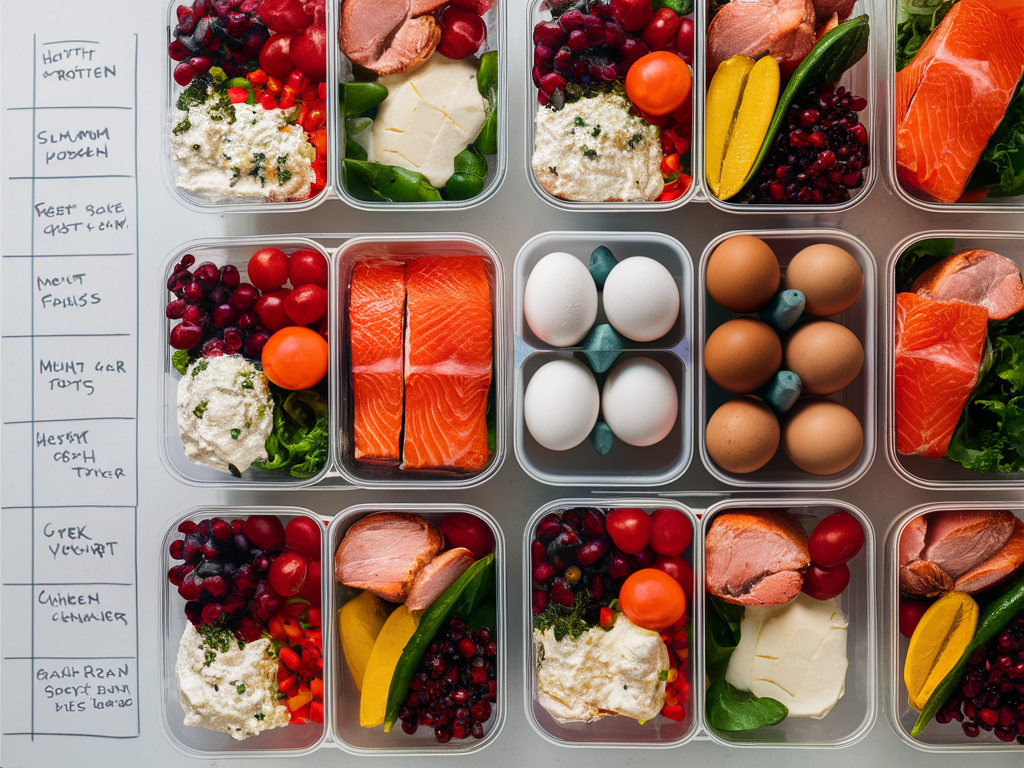Protein is an essential macronutrient that serves as a fundamental building block for our bodies. Whether you’re an athlete looking to build muscle, someone trying to manage weight, or simply interested in improving your overall health, incorporating high-protein foods into your diet can make a significant difference in achieving your fitness and wellness goals.
In this comprehensive guide, we’ll explore the 20 best high-protein foods that can transform your health and fitness routine. From animal-based options to plant-based alternatives, we’ve got you covered with detailed nutritional information, practical preparation tips, and creative ways to incorporate these protein powerhouses into your daily meals.
Why Protein Matters: The Foundation of Health and Fitness
Protein plays numerous crucial roles in the body, making it indispensable for optimal health and physical performance. Understanding the importance of this macronutrient can help you make informed dietary choices.
Health Benefits of High-Protein Foods
Incorporating adequate protein into your diet offers multiple advantages that extend beyond just muscle development:
- Muscle Building and Repair: Protein provides the essential amino acids needed for muscle protein synthesis, aiding in recovery after exercise and promoting muscle growth.
- Weight Management Support: High-protein foods increase satiety hormones while reducing hunger hormones, helping you feel fuller longer and potentially reducing overall calorie intake.
- Enhanced Energy Levels: Unlike simple carbohydrates that cause energy spikes and crashes, protein provides a steady source of energy throughout the day.
- Reduced Cravings: Protein helps stabilize blood sugar levels, which can decrease cravings for unhealthy snacks and processed foods.
Recommended Daily Protein Intake
While individual protein needs vary based on factors like activity level, age, and fitness goals, general guidelines suggest:
- Sedentary adults: 0.8g of protein per kilogram of body weight
- Recreational exercisers: 1.1-1.4g per kilogram of body weight
- Competitive athletes: 1.2-2.0g per kilogram of body weight
- People recovering from injuries or surgeries: May require higher amounts
Now, let’s explore the best high-protein foods you can incorporate into your diet.
Animal-Based Protein Sources: Complete Nutrition Powerhouses
Animal proteins are considered “complete proteins” because they contain all nine essential amino acids that our bodies cannot produce independently.
Lean Meats: Efficient Protein Delivery
1. Chicken Breast
A staple in many fitness-focused diets, chicken breast offers a lean protein source with minimal fat content.
- Protein Content: Approximately 31g per 100g serving (cooked)
- Key Nutrients: Vitamin B6, niacin, phosphorus, and selenium
- Preparation Tips: To maintain moisture, consider marinating before cooking, using a meat thermometer (165°F/74°C for safe consumption), and allowing it to rest before slicing.
2. Turkey
Similar to chicken but with a distinct flavor profile, turkey is another excellent lean protein option.
- Protein Content: About 29g per 100g serving (cooked breast meat)
- Key Nutrients: Rich in B vitamins, zinc, and selenium
- Preparation Tips: Turkey can dry out easily, so consider brining before cooking, using a lower temperature, and incorporating healthy fats like olive oil during preparation.
3. Lean Beef
When selected properly, beef can be a nutritious protein source with additional benefits.
- Protein Content: 26-27g per 100g serving (cooked, depending on cut)
- Key Nutrients: Iron (particularly heme iron, which is easily absorbed), zinc, vitamin B12, and creatine
- Preparation Tips: Choose cuts labeled “loin” or “round” for leaner options, trim visible fat before cooking, and consider methods like grilling or broiling that allow fat to drain away.

Seafood: Protein with Heart-Healthy Benefits
4. Salmon
This fatty fish offers the dual benefits of high-quality protein and essential omega-3 fatty acids.
- Protein Content: About 25g per 100g serving (cooked)
- Omega-3 Benefits: EPA and DHA fatty acids support heart health, brain function, and reduce inflammation
- Preparation Tips: Baking, grilling, or pan-searing at moderate temperatures preserves nutrients; consider adding herbs like dill or lemon for flavor without extra calories.
5. Tuna
Whether fresh or canned, tuna provides exceptional protein content with minimal fat.
- Protein Content: Approximately 30g per 100g serving (cooked)
- Key Nutrients: Selenium, vitamin D, various B vitamins, and omega-3 fatty acids (though less than salmon)
- Preparation Tips: For canned tuna, choose varieties packed in water rather than oil to reduce calories; fresh tuna steaks should be cooked briefly to maintain moisture and nutrient content.
6. Shrimp
This versatile seafood option provides substantial protein with remarkably few calories.
- Protein Content: 24g per 100g serving (cooked)
- Low-Calorie Benefits: Only about 100 calories per 100g serving, making it one of the most protein-dense foods available
- Preparation Tips: Cook quickly to prevent toughening; grilling, sautéing, or steaming for just a few minutes is typically sufficient.
Dairy Products: Convenient Protein Sources
7. Greek Yogurt
A concentrated form of yogurt with significantly more protein than regular varieties.
- Protein Content: 10g per 100g serving (varies by brand)
- Probiotic Benefits: Contains live beneficial bacteria that support gut health and immune function
- Serving Suggestions: Enjoy plain with fresh fruit and a drizzle of honey, use as a sour cream substitute, or incorporate into smoothies for added creaminess and protein.
8. Cottage Cheese
A longtime favorite among fitness enthusiasts for its exceptional protein content.
- Protein Content: 11-12g per 100g serving
- Versatility in Diet: Works equally well in sweet and savory dishes
- Serving Suggestions: Pair with fresh fruit or cinnamon for a sweet option; mix with herbs, olive oil, and black pepper for a savory dish; blend into smoothies for added protein without altering the flavor significantly.
9. Milk
A complete food that provides protein alongside numerous other essential nutrients.
- Protein Content: 3.4g per 100ml (varies slightly by type)
- Additional Nutrients: Calcium, vitamin D, potassium, and vitamin B12
- Best Uses in Diet: Use as a post-workout recovery drink, add to smoothies, or consume with meals to boost overall protein intake.
10. Eggs: Nature’s Perfect Protein Package
Often referred to as nature’s multivitamin, eggs provide exceptional nutritional value.
- Protein Content: About 6-7g per large egg
- Complete Amino Acid Profile: Contains all nine essential amino acids in the ideal ratio for human nutrition
- Versatility and Preparation Options: From simple preparations like boiled, scrambled, or poached to more complex dishes like frittatas and omelets, eggs can be incorporated into virtually any meal of the day.
Plant-Based Protein Sources: Nutrient-Rich Alternatives
Plant proteins can provide substantial nutritional benefits while often delivering additional fiber, antioxidants, and phytonutrients.
Legumes: Protein and Fiber Powerhouses
11. Lentils
These small but mighty legumes cook quickly and adapt to numerous cuisines.
- Protein Content: 9g per 100g (cooked)
- Fiber Benefits: Contains both soluble and insoluble fiber, supporting digestive health and prolonged satiety
- Preparation Tips: Unlike many beans, lentils don’t require pre-soaking; simmer with aromatics like garlic and onion for enhanced flavor; add to salads, soups, or use as a meat substitute in dishes like vegetarian bolognese.

12. Chickpeas
Also known as garbanzo beans, these versatile legumes form the base of numerous international dishes.
- Protein Content: 9g per 100g (cooked)
- Versatility in Recipes: From hummus to curries to roasted snacks, chickpeas adapt to countless culinary applications
- Preparation Tips: For canned chickpeas, rinse thoroughly to remove excess sodium; for dried, soak overnight and cook until tender; try roasting with spices for a crunchy high-protein snack.
13. Black Beans
A staple in Latin American cuisine, black beans offer numerous health benefits.
- Protein Content: 8.9g per 100g (cooked)
- Antioxidant Benefits: The deep black color indicates high anthocyanin content, providing potent antioxidant protection
- Preparation Tips: Enhance flavor by cooking with bay leaves, garlic, and onions; use in burritos, on salads, or pureed into dips.
Nuts and Seeds: Concentrated Nutrition
14. Almonds
These nutrient-dense nuts provide protein alongside numerous other benefits.
- Protein Content: 21g per 100g
- Healthy Fat Profile: Rich in monounsaturated fats that support heart health
- Serving Suggestions: Consume raw or lightly toasted as a snack, add to oatmeal or yogurt, use almond butter as a spread, or incorporate sliced almonds into salads and baked goods.
15. Chia Seeds
These tiny seeds pack an impressive nutritional punch.
- Protein Content: 17g per 100g
- Omega-3 Content: One of the richest plant sources of alpha-linolenic acid (ALA), a plant-based omega-3 fatty acid
- Ways to Incorporate: Add to smoothies, make chia pudding by soaking in milk or plant-based alternatives, use as an egg substitute in baking, or sprinkle on yogurt, oatmeal, or salads.
16. Quinoa
Though technically a seed, quinoa is nutritionally categorized as a whole grain with exceptional protein quality.
- Complete Protein Profile: Contains all nine essential amino acids, a rarity among plant foods
- Nutrient Density: Provides magnesium, phosphorus, manganese, and folate
- Cooking Tips: Rinse thoroughly before cooking to remove natural saponins that can impart bitterness; cook with a 2:1 ratio of liquid to quinoa; use as a base for grain bowls, add to salads, or incorporate into breakfast porridges.
Soy Products: Versatile Protein Options
17. Tofu
Made from condensed soy milk, tofu is remarkably adaptable in the kitchen.
- Protein Content: 8g per 100g (varies by firmness; firmer varieties contain more protein)
- Versatility in Cooking: Available in silken, soft, medium, firm, and extra-firm textures, each suited to different culinary applications
- Preparation Methods: Press firmer varieties to remove excess water before cooking; marinate to enhance flavor absorption; try baking, stir-frying, grilling, or blending into smoothies (silken variety).
18. Edamame
These young soybeans offer a delicious, minimally processed protein source.
- Protein Content: 11g per 100g (cooked)
- Nutrient Profile: Rich in folate, vitamin K, and fiber
- Serving Suggestions: Enjoy steamed with a sprinkle of sea salt as an appetizer or snack; add to salads, stir-fries, or grain bowls; puree into dips as an alternative to hummus.
19. Tempeh
This fermented soy product offers a firmer texture and distinct flavor compared to tofu.
- Protein Content: 19g per 100g
- Fermentation Benefits: The fermentation process increases nutrient absorption, creates beneficial compounds, and introduces probiotics
- Cooking Suggestions: Steam before marinating to remove any bitterness; slice and pan-fry until crispy; crumble and use as a ground meat substitute in tacos, chili, or pasta sauces.
Protein Supplements: Convenient Options for Meeting Goals
20. Whey Protein
Derived from milk during cheese production, whey is the most thoroughly researched protein supplement.
- Fast Absorption Benefits: Rapidly digested and absorbed, making it ideal for post-workout recovery
- Complete Amino Acid Profile: Particularly rich in leucine, the amino acid most directly responsible for stimulating muscle protein synthesis
- Best Uses: Post-workout shakes, meal replacements when whole foods aren’t available, added to smoothies, or incorporated into recipes like protein pancakes or oatmeal.
Plant-Based Protein Powders
For those avoiding animal products or with dairy sensitivities, plant-based alternatives offer viable options.
- Types Available: Pea, rice, hemp, soy, and blended formulations that combine multiple sources to create complete amino acid profiles
- Benefits for Different Dietary Needs: Allergen-friendly options available; often contain additional fiber; typically lower in saturated fat
- How to Incorporate: Use in smoothies, mix with plant-based milk, add to oatmeal, or incorporate into baked goods and energy balls.

Meal Planning with High-Protein Foods: Putting Knowledge into Practice
Understanding protein-rich foods is just the beginning—incorporating them effectively into your diet is where real benefits emerge.
Balanced Meal Suggestions
Creating balanced meals ensures you’re getting protein alongside other essential nutrients:
- Breakfast: Greek yogurt with berries, chia seeds, and a drizzle of honey; spinach and feta omelet with whole-grain toast; protein smoothie with plant milk, banana, and nut butter
- Lunch: Quinoa bowl with grilled chicken, roasted vegetables, and tahini dressing; lentil soup with a side salad; tuna salad with mixed greens and whole-grain crackers
- Dinner: Baked salmon with steamed broccoli and sweet potato; tofu stir-fry with brown rice and mixed vegetables; lean beef chili with black beans and bell peppers
Protein-Rich Snack Ideas
Snacks can help maintain energy levels and support protein goals throughout the day:
- Hard-boiled eggs
- Cottage cheese with sliced peaches
- Edamame pods with sea salt
- Turkey and avocado roll-ups
- Roasted chickpeas
- Greek yogurt with a sprinkle of nuts
- Protein shake
- Almond butter with apple slices
Sample Meal Plans for Different Goals
For Muscle Building
Focus on higher protein intake with adequate calories and carbohydrates to support growth:
- Breakfast: 4-egg omelet with vegetables and cheese, whole-grain toast with avocado
- Snack: Protein shake with banana and 2 tablespoons of nut butter
- Lunch: 6 oz grilled chicken, 1 cup quinoa, 1 cup roasted vegetables, olive oil dressing
- Snack: 1 cup Greek yogurt with berries and 1 oz almonds
- Dinner: 6 oz salmon, sweet potato, steamed broccoli
- Evening: Cottage cheese with cinnamon (slow-digesting protein before bed)
For Weight Management
Emphasize protein to maintain satiety while managing overall calories:
- Breakfast: Protein smoothie with spinach, plant milk, protein powder, and ½ banana
- Snack: Hard-boiled egg and vegetable sticks
- Lunch: Large salad with 4 oz tuna, mixed greens, vegetables, and light dressing
- Snack: ¼ cup roasted edamame
- Dinner: 4 oz turkey breast, ½ cup lentils, large portion of roasted vegetables
- Evening (if needed): Herbal tea or broth-based protein soup
For Overall Health Maintenance
Balance protein with other nutrients for long-term wellness:
- Breakfast: Overnight oats with Greek yogurt, chia seeds, and berries
- Snack: Apple with 1 tablespoon almond butter
- Lunch: Grain bowl with ½ cup quinoa, 3 oz chicken or tempeh, avocado, and vegetables
- Snack: Small handful of mixed nuts and seeds
- Dinner: 4 oz baked fish, roasted sweet potato, steamed green vegetables, olive oil
The Balanced Approach to Protein Consumption
While protein offers numerous health benefits, a balanced approach yields the best results. Here’s how to make high-protein foods work effectively in your diet:
Summary of Benefits
Consistent consumption of high-quality protein supports:
- Muscle maintenance and growth
- Metabolic health and weight management
- Stable energy levels throughout the day
- Reduced hunger and cravings
- Better recovery from exercise and injury
- Overall nutrient intake, as many protein sources provide additional vitamins and minerals
Tips for Incorporating More Protein
Make protein a priority with these practical strategies:
- Include a protein source with every meal and snack
- Prepare protein-rich foods in advance for convenience
- Start your day with a protein-focused breakfast to set a positive tone
- Keep portable protein options available for busy days
- Experiment with different protein sources to prevent diet monotony
- Consider the timing of protein consumption, particularly around workouts
- Read nutrition labels to identify hidden protein sources and compare options
Balanced Approach to Protein Consumption
Remember these principles for long-term success:
- Quality matters as much as quantity—focus on nutrient-dense protein sources
- Variety ensures you’re getting a complete range of amino acids and complementary nutrients
- Balance protein with adequate fiber, healthy fats, and complex carbohydrates
- Listen to your body and adjust intake based on hunger, energy levels, and performance
- Consider individual factors like age, activity level, health conditions, and personal goals when determining optimal protein intake
By thoughtfully incorporating these 20 high-protein foods into your diet, you can enhance your nutritional status, support your fitness goals, and improve your overall health and wellness. Remember that consistency, rather than perfection, leads to the most sustainable results.

